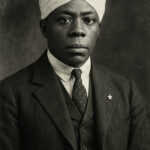Visualization is a key technique that helps athletes enhance performance by building confidence, improving focus, and overcoming challenges through mental rehearsal of successful outcomes.
Visualization is an essential technique that many athletes use to enhance their performance. Have you ever wondered how visualizing a successful outcome can transform your approach to challenges?
Jump to section
Understanding visualization in sports
Understanding visualization is crucial for athletes looking to improve their performance. Visualization is not just about imagining success; it’s a mental exercise that engages the brain in a way to prepare for challenges and enhance skills. Athletes often use this technique before events to create a mental picture of their actions and the outcomes they desire.
By employing visualization, athletes can rehearse their performance in a stress-free environment. This method helps build confidence and reduces anxiety by familiarizing themselves with the experience they expect during competition. Coaches commonly encourage this practice, recognizing its value in both individual and team sports.
It’s important to learn how to visualize effectively. Athletes can start by closing their eyes and picturing every detail of their performance: the environment, their movements, and the emotions they feel. This practice not only reinforces muscle memory but also enhances focus and concentration during actual competitions.
The mental preparation process
The mental preparation process is vital for athletes who aim to achieve peak performance. This process involves various strategies that help athletes get ready before competitions or events. One effective method is developing a routine that includes visualization, affirmations, and relaxation techniques. By having a consistent routine, athletes can foster a sense of control and confidence.
Visualization plays a key role in mental preparation. Athletes often imagine themselves succeeding in their specific sports. This practice not only helps in building confidence but also enhances focus and reduces anxiety. Alongside visualization, using positive affirmations can boost an athlete’s self-belief. Saying phrases like “I am strong” or “I will succeed” can set a positive tone for their performance.
Relaxation techniques, such as deep breathing or meditation, are also important in managing stress. These methods allow athletes to calm their minds and settle their nerves, making it easier to concentrate on their performance. Incorporating these techniques consistently leads to better mental resilience during competitions.
Techniques for effective visualization

Utilizing techniques for effective visualization can significantly improve an athlete’s performance. One popular technique is creating a detailed mental image of the desired outcome. This involves imagining every aspect of the scenario, from warming up to competing. Athletes should visualize not just the actions but also the emotions they will feel while performing.
Another effective method is using a visualization script. Athletes can write down their ideal performance in detail, describing what they see, hear, and feel. By regularly reading this script, athletes can reinforce their mental images, making the experience more vivid and real in their minds.
Incorporating physical cues during visualization can also enhance the practice. Athletes may choose to use specific gestures or movements while visualizing, creating a stronger connection between their mind and body. For example, simulating a sprinting motion while envisioning a race can help solidify their readiness.
Benefits of visualizing success
The benefits of visualizing success are numerous and impactful for athletes. First, visualization helps boost confidence. When athletes imagine themselves succeeding, it creates a mental environment that promotes belief in their abilities. This heightened confidence can translate to improved performance during actual competitions.
Another significant benefit is the enhancement of focus and concentration. By regularly practicing visualization, athletes learn to narrow their focus on what truly matters, minimizing distractions. This mental training allows them to maintain composure under pressure, leading to better decision-making during competitions.
Furthermore, visualization can aid in reducing performance anxiety. Athletes who consistently visualize their success often find that they can calm their nerves before high-stakes events. By repeatedly experiencing their ideal outcomes in their minds, they create a sense of familiarity, which can be comforting on the day of competition.
Overcoming challenges with visualization
Overcoming challenges with visualization is a powerful strategy for athletes facing obstacles. One common challenge is dealing with performance anxiety. By visualizing successful outcomes, athletes can mentally prepare themselves for high-pressure situations. This mental rehearsal helps reduce fear and builds confidence, allowing them to approach competition with a calmer mindset.
In addition, visualization can aid athletes in recovering from injuries. When athletes cannot physically train, they can still visualize themselves performing their sport perfectly. This practice keeps their mental skills sharp and fosters a positive attitude, which can facilitate faster recovery and a more effective return to their sport.
Another area where visualization proves beneficial is in overcoming mental blocks. Athletes may experience moments where they doubt their abilities or struggle with specific skills. By visualizing successful executions, they can reinforce positive thoughts and break through these mental barriers, boosting their overall performance.
Real-life success stories of athletes using visualization

Real-life success stories of athletes using visualization highlight the power of this mental technique. For instance, Olympic swimmer Michael Phelps has spoken about how he visualized his races in detail, preparing himself for every possible scenario. This mental preparation allowed him to stay calm under pressure and focus on executing his skills flawlessly.
Another inspiring example is tennis champion Serena Williams. She often incorporates visualization into her training routine, imagining herself winning important matches. This practice helps her maintain confidence and clarity, especially during critical points in a match. Williams emphasizes that visualizing success has played a significant role in her achievements throughout her career.
Additionally, basketball star Kobe Bryant was known for his intense focus on mental preparation. He used visualization techniques to rehearse his movements, making them feel second nature. By picturing himself making game-winning shots, he increased his confidence and reduced anxiety during high-pressure games.
Embracing the Power of Visualization in Sports
Visualization is a powerful tool that can greatly enhance athletic performance. By imagining success and practicing mental techniques, athletes can build confidence, improve focus, and overcome challenges. Success stories from well-known athletes show us that visualization can lead to remarkable achievements.
As athletes continue to embrace this method, they can unlock their full potential. Incorporating visualization into daily training routines can transform how they approach competitions and setbacks.
Ultimately, making visualization a regular practice will help athletes reach new heights, both on and off the field.






